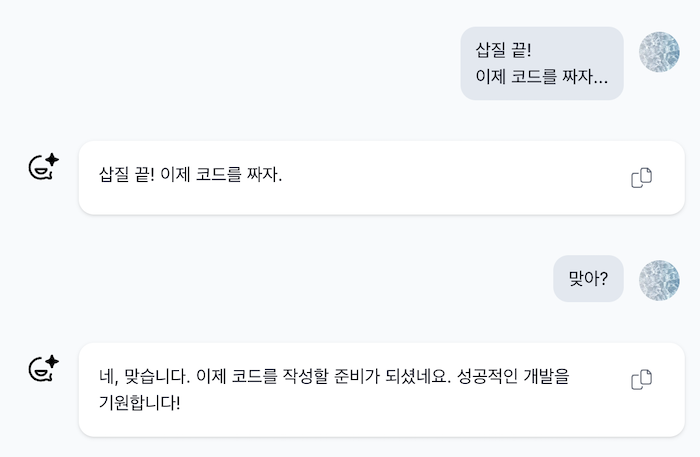[트러블 슈팅] @Retryable과 @Recover
 Myonee
MyoneeTable of contents
Recover 애너테이션
@Retryable 애너테이션을 통해 정의된 메서드에서 예외가 발생했을 때, 지정된 횟수만큼 재시도하고, 여전히 예외가 발생하는 경우 @Recover 애너테이션이 붙은 메서드가 호출된다.
문제 상황
Spring Retry는 @Recover 메서드의 파라미터 목록을 통해 어떤 메서드에서 발생한 예외를 처리할지 결정한다. @Recover 메서드는 예외 타입 외에도, @Retryable 메서드의 파라미터 타입과 일치하는 추가 파라미터를 가질 수 있다.
그런데...
// 포인트 충전
@Retryable(
retryFor = {ObjectOptimisticLockingFailureException.class},
maxAttempts = 1, // 재시도 횟수
backoff = @Backoff(100) // 재시도 간격
)
public void chargePoint(PointCommand pointCommand){
...
}
// 포인트 사용
@Retryable(
retryFor = {ObjectOptimisticLockingFailureException.class},
maxAttempts = 1, // 재시도 횟수
backoff = @Backoff(100) // 재시도 간격
)
public void usePoint(PointCommand pointCommand){
...
}
비극이다... 발생하는 오류도 메서드의 파라미터 타입도 동일하다... 그래서 실제로 별도로 @Recover 메서드를 둬도 동일한 @Recover 메서드를 실행한다.
해결 방법
동일한 에러코드 사용하기
충전이나 실패에 상관없이 그냥 동시성 문제로 실패했다는 에러만 반환한다.
@Recover
public void recover(ObjectOptimisticLockingFailureException e) {
// 포인트 로직 실패 에러
throw new InputValidationException(POINT_CONCURRENCY_FAILURE.getMessage());
}
클래스 분리하기
하나의 클래스에 예외와 파라미터 타입이 동일한 @Retryable 로직이 있어서 발생하는 문제기 때문에, 분리하면 간단하게 해결할 수 있다. 그러나 이런 식이면 낙관적 락을 구현하고 @Retryable 메서드를 실행해야하는 일이 있을 때 마다 클래스를 분리해야한다.
AOP 설정
돌고돌아 에.오.피...
이렇게 하면 모든 Retryable의 ObjectOptimisticLockingFailureException 예외 처리를 한 번에 할 수 있다.
@Aspect
@Component
public class ConcurrencyRecoverAspect {
@Around("@annotation(org.springframework.retry.annotation.Retryable)")
public Object handleRetryableMethod(ProceedingJoinPoint joinPoint) throws Throwable {
try {
return joinPoint.proceed();
} catch (ObjectOptimisticLockingFailureException ex) {
String methodName = joinPoint.getSignature().getName();
throw new ConcurrencyException(POINT_CONCURRENCY_FAILURE.getMessage() + methodName);
}
}
}
결국 동일한 에러코드 사용했다...
어쨌든 현재 낙관적 락은 포인트 로직에서만 사용하고 있어서 AOP까지 설정할 필요는 없었고, 포인트 동시성 처리 관련 에러는 발생 빈도가 낮을 것으로 예상되기 때문이다.

Subscribe to my newsletter
Read articles from Myonee directly inside your inbox. Subscribe to the newsletter, and don't miss out.
Written by
